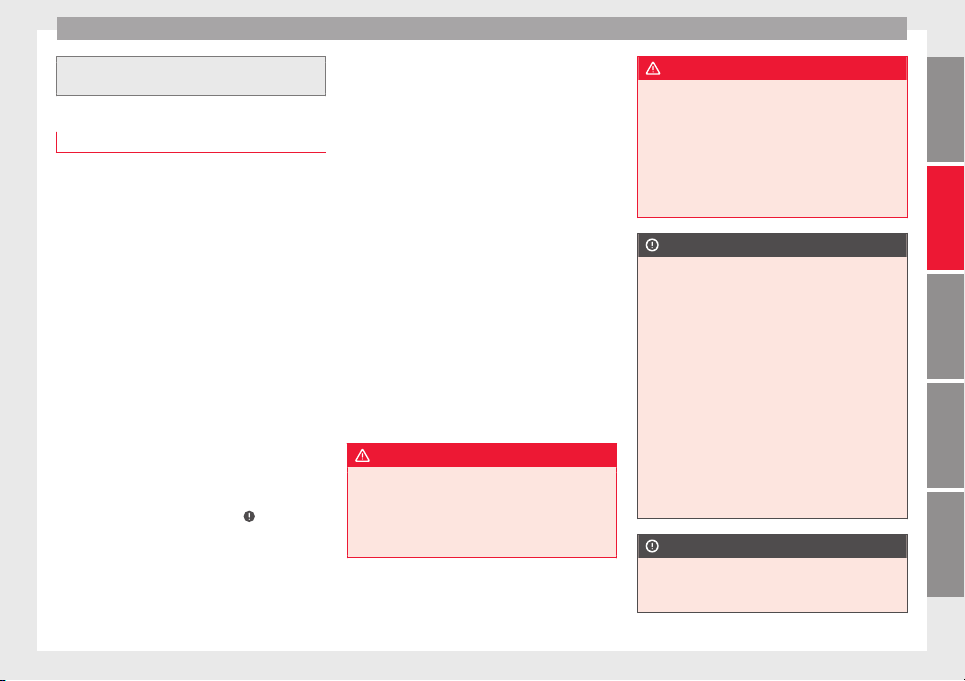Loading ...
Loading ...
Loading ...

Care and maintenance
waste. Observe information provided by the
manufact
urer.
Washing the vehicle
The longer substances such as insects, bird
droppin
gs, resinous tree sap, road dirt, in-
dustrial deposits, tar, soot or road salt and
other aggressive materials remain on the ve-
hicle, the more damage they do to the paint-
work. High temperatures (for instance due to
strong sunlight) further intensify the corro-
sive effect. The vehicle undercarriage should
also be thoroughly washed at regular inter-
vals.
Automatic car washes
Always observe the instructions provided at
the automatic car wash. The standard pre-
cautionary measures prior to entering the car
wash should be taken to avoid damage to
the vehicle (close all windows, fold in exterior
mirrors). If the vehicle is fitted with additional
components (spoiler, roof-rack, aerial, etc.),
check with the car wash supervisor whether
these can enter the car wash ›››
.
The
v
ehic
le paintwork is so durable that the
vehicle can normally be washed without
problems in an automatic car wash tunnel.
However, wear and damage to the paintwork
will depend on the type of car wash used.
SEAT recommends the use of car washes
without brushes.
To remove traces of wax on windows and to
prevent wiper blades from scratching, please
observe the following ››› page 172, Cleaning
windows and exterior mirrors.
Washing the car by hand
When washing the car by hand, use plenty of
water to soften the dirt first, and rinse off as
well as possible.
Then clean the vehicle with a soft sponge,
glove or brush using only slight pressure.
Start at the roof and work downwards. Spe-
cial car shampoo should only be used for
very persistent dirt.
Rinse the sponge or glove thoroughly and of-
ten.
Wheels, sills and similar should be cleaned
last. Use a second sponge for this.
WARNING
Sharp components on the vehicle may cause
injury.
●
Pr
otect arms and hands from sharp edges
when cleaning the vehicle undercarriage or
the interior of the wheel hubs.
WARNING
After the vehicle has been washed, the brak-
ing effect
will be reduced (and the braking
distance increased) due to moisture (and ice
in winter) on the brakes.
●
“Dry the brakes and remove ice” by braking
carefully. Ensure that you are not endanger-
ing other road-users or breaking traffic regu-
lations in the process.
CAUTION
●
The water t
emperature should not exceed
+60 °C (+140 °F).
●
To avoid damage to the paintwork, do not
wash the vehicle in full sun.
●
Do not use rough sponges or similar which
could damage the surface to clean away the
traces of insects.
●
Never wipe the headlights with a dry cloth
or sponge, always moisten first. It is best to
use soapy water.
●
Washing the vehicle in low temperatures:
When washing the vehicle with a hose, do
not direct water into the lock cylinders or the
gaps around the doors or roof. Locks and
seals could freeze!
CAUTION
To avoid any risk of damage to the vehicle,
ple
ase check the following points before us-
ing an automatic car wash:
»
171
Technical dataAdviceOperationEmergenciesSafety
Loading ...
Loading ...
Loading ...